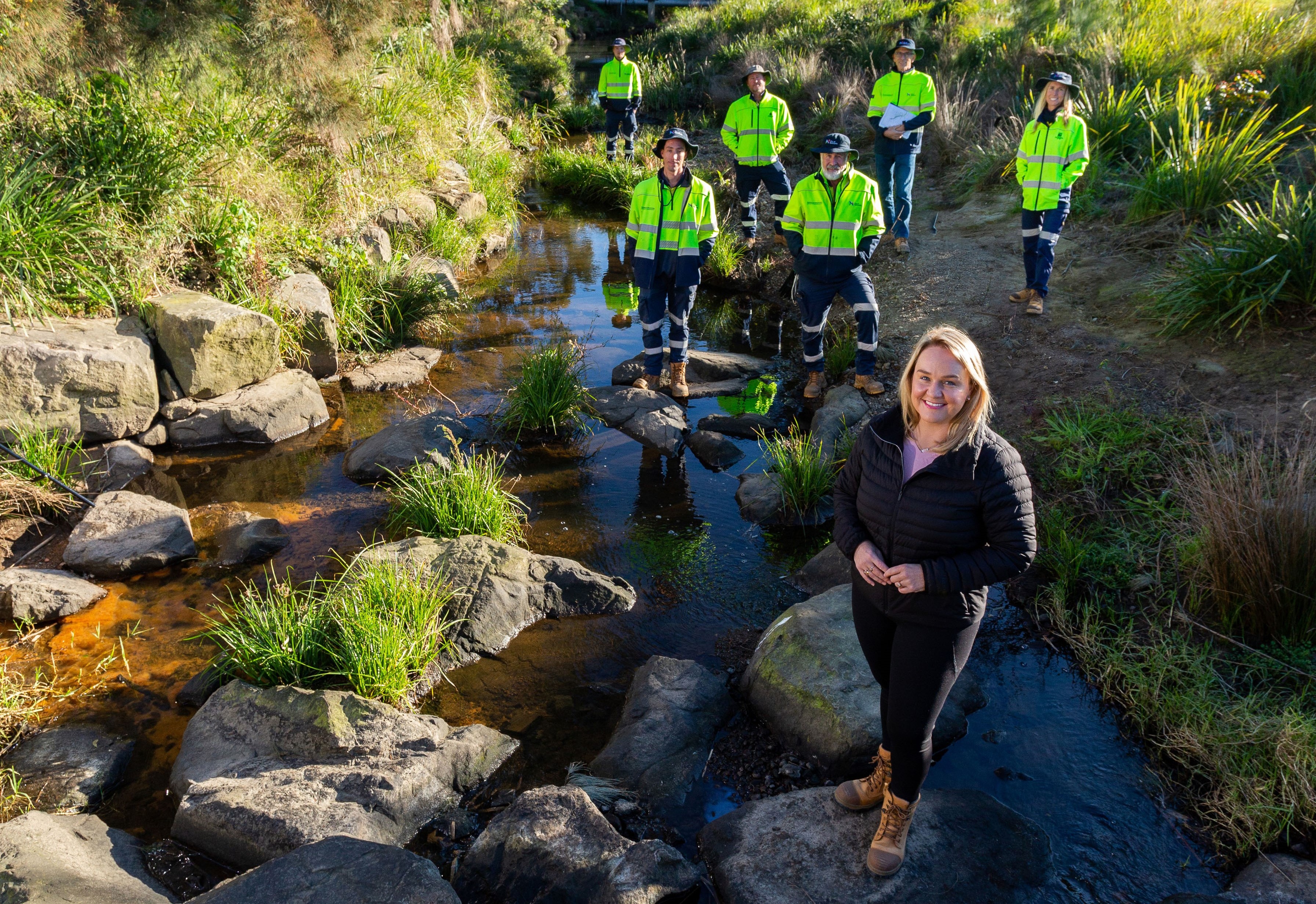City of Newcastle has commenced the next stage of its award-winning Ironbark Creek rehabilitation project, targeting 350 metres of creek from Croudace Road, Elermore Vale, to Lewis Street Oval, Wallsend.
The $2.6 million stage of the project will significantly renaturalise the channel replacing weeds with thousands of native plants on the creek banks, and new rock work will better protect the creek as well as public and private assets.
The project will produce an environmentally friendly watercourse, which will improve flow and help make the creek and floodplain behave in more predictable ways during major floods.
 Image: Newcastle Lord Mayor Nuatali Nelmes inspects a previously rehabilitated section of Ironbark Creek with City of Newcastle staff (L-R) Sam Parker, Lindsay Nichols, Dean Jamieson, Ian Lacey, Stephen Long and Petra Freeman.
Image: Newcastle Lord Mayor Nuatali Nelmes inspects a previously rehabilitated section of Ironbark Creek with City of Newcastle staff (L-R) Sam Parker, Lindsay Nichols, Dean Jamieson, Ian Lacey, Stephen Long and Petra Freeman.
Lord Mayor Nuatali Nelmes said the complex project has been crucial in ensuring the health and long-term sustainability of the creek.
“City of Newcastle is committed to caring for and enhancing our natural environment and that is clear to see when you consider what we have achieved with Ironbark Creek. We started rehabilitation works 10 years ago and I’m proud to say that we are now continuing on with this next stage,” Cr Nelmes said.
“We expect this work will also improve the local tree canopy and habitat in the area, making the creek line friendlier for native plants, birds and other animals.”
The Ironbark Creek project began in 2011 and by using nature-based solutions, aims to rehabilitate the creek from Elermore Vale Park, downstream to Wallsend Park where the creek flows into a Hunter Water Channel.
“Ironbark Creek is the city’s largest tidal creek draining to the Hunter River. Its catchment covers nearly 13,000 hectares and is crucial to the health of our local catchment,” Cr Nelmes added.
“We have invested over $4.1 million into rehabilitating Ironbark Creek over the past decade, which provides flow on benefits beyond the creek, including into Hexham Swamp. Hexham Swamp is a fresh water and estuarine wetland, of ecological importance, which was once the largest predominantly freshwater wetland on the near north coast of New South Wales. The benefits will also reach as far as the Hunter River mouth at Sandgate.”
Work on this stage of the project is scheduled to be completed in November, weather dependent, with the next two stages currently in the design phase.




